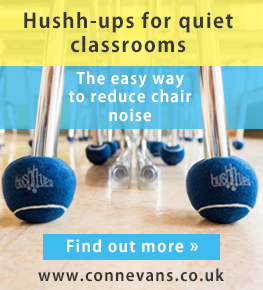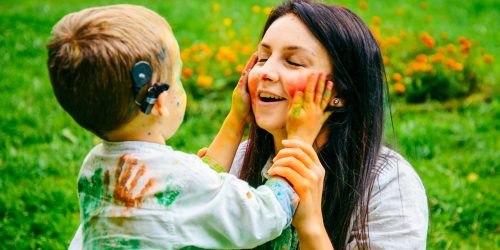Communication approaches, modes and methods currently in use in the education of deaf children and young people in the UK
BATOD does not propose a Communication Policy. The Association supports the views and needs of all young people and their families. As an organisation for Teachers of the Deaf, BATOD promotes best practice and knowledge for Teachers of the Deaf across the UK. On this website you will find an explanation of the range of communication and language options for deaf learners.
Statement of Entitlement All children and young people have the right to a language and/or developed communication system which enables them to communicate effectively in a variety of settings and for a variety of purposes, including accessing education. It is the role of Teachers of the Deaf to provide parents with information to allow them to make an informed choice about the communication and language approach for their child
Communication Choices Once a child has been diagnosed with a hearing loss his/her parents may have to make a decision about the communication approach they, and the child, should adopt. In order to participate fully in making this decision, parents should have clear and unbiased information about the possible options. Their choice may depend on a number of factors such as the family situation and home language, whether the child has additional special educational needs, and perhaps the degree of deafness. Outside influences such as accessibility to a peer group using the same communication approach, and the range of educational placements available may also affect preference. There is a range of approaches to language and communication methods and approaches.
The Natural Aural approach which fosters the development of spoken language. Meaningful interaction and conversation encourage the growth of auditory discrimination skills, using everyday experience rather than through direct teaching. More information is available on the Delta website.
British Sign Language British Sign Language (BSL) has its own distinct grammar. It is a visual spatial language using handshapes, facial expressions, gestures and body language to convey meaning and to communicate. The BDA states “British Sign Language (BSL) is the preferred language of over 87,000 Deaf people in the UK for whom English may be a second or third language.” www.bda.org.uk.
British Sign Language (BSL) has its own distinct grammar. It is a visual spatial language using handshapes, facial expressions, gestures and body language to convey meaning and to communicate. The BDA states, “British Sign Language (BSL) is the preferred language of over 87,000 Deaf people in the UK for whom English may be a second or third language.” www.bda.org.uk
In addition, BSL has its own lip patterns distinct from those of English. Meanings can be changed via speed of hand or body movement and facial expression. Language is communicated simultaneously within a 3D space rather than sequentially.
There are regional differences in BSL in the same way that there are regional differences in spoken languages.
More information is available on the Sign Bilingual consortium website.
Total Communication (TC) The original definition (Denton 1968 – USA) referred more to a philosophy than a communication approach or method. Denton described it as ‘the full spectrum of language modes, child devised gesture, the language of signs, speech reading, finger spelling, reading, writing and residual hearing’ There is now much variation in its interpretation and use. Some people see it as a flexible approach to communication in which children may vary in how they receive and express language. Therefore, they may use a variety of modes such as aural/oral communication, British Sign Language (BSL), fingerspelling, Sign Supported English or Signs Supporting English (SSE). Others describe it as a method in which signed and auditory/oral components are combined, i.e. SSE is used.
Sign Supported English or Signs Supporting English (SSE). Sign Supported English or SSE is a manual support system incorporating signs taken from BSL together with fingerspelling. It is used in English word order to supplement spoken words but does not attempt to present every element of the spoken utterance. It aims to clarify the spoken message and lessen ambiguity by using sign support. More information is available on the signedlanguage.co.uk website.
Signed English (British) Signed English is designed to be used as an aid to teaching English to deaf children. It is not a language in itself and is not intended for general, spontaneous communication. It is based on British Sign Language and uses markers, generated signs and finger spelling to reproduce as accurately as possible the grammatical components of English.
Fingerspelling This is the manual representation of the letters of the alphabet by 26 different hand positions. In the UK this is accomplished by means of a two-handed alphabet but other variants exist. Fingerspelling is an integral part of sign language and sign supporting systems.
Auditory Verbal Therapy Auditory Verbal Therapy aims to develop children’s spoken language through listening. It is delivered in partnership with the child’s parent or carers. Auditory Verbal Therapists promote early diagnosis of hearing loss in children, followed by immediate audiological management.using appropriate, state-of-the-art hearing technology to obtain maximum benefits of auditory stimulation. AVT practitioners guide and coach parents to help their child use hearing as the primary sensory modality in developing listening and spoken language through active consistent participation in individualised Auditory Verbal Therapy sessions and by creating environments that support listening for the acquisition of spoken language throughout the child’s daily activities. Natural developmental patterns of audition, speech, language, cognition, and communication are used. Parents and carers are coached to help their child self-monitor spoken language through listening. More information is available on the AVUK website.
The Maternal Reflective or Graphic Oral method. The Maternal Reflective Method is built on the principle that the best starting point for language teaching is the child’s individual interests and experiences. The maternal aspect refers to the use of a communication style that is similar to the way parents interact with very young children, An experience a child is eager to communicate is developed into its simplest correct form by the teacher. The teacher then produces a personalised reading text which pupils use as a starting point for class discussions and for learning vocabulary, spelling and grammar. More information is available on the website of St John’s School, Boston Spa.
Structured Oral approaches which are used to encourage one or more of the following:
- speech acquisition
- language development
- optimum use of residual hearing
- lipreading (speech reading)
Cued Speech Cued Speech (CS) is a one-handed lip-reading supplement which gives complete visual access to spoken languages. Both professionals and parents can learn the basics in about 20 hours (more time is needed to develop full fluency) so it’s use can solve the twin problems of early communication and language development. The system can be used in a variety of ways, from giving full access to language (both at home, from diagnosis, and at school) to simply teaching phonics. It is used to support listening and/or bilingually with BSL. Its use may vary: 1) over time, e.g. lessening as a child matures and becomes more language-competent 2) according to situations, e.g. sometimes just clarifying a word where the rest of the sentence was well known and easily lip-read; other times giving full language access. Research indicates that the best results are with children who have CS input at home, at a language level and from an early age. More information is available on the Cued Speech Association website.
Makaton This comprises a specially selected vocabulary (taken from BSL) to provide a basis for communication, often with children with severe learning difficulties. It is structured in stages of increasing complexity and follows the normal pattern of language development. The initial stages comprise basic vocabulary necessary to express some essential needs. Subsequent stages contain more complex language. More information is available on the Makaton website.
Signalong Signalong was devised as a more flexible approach to that offered by Makaton and was considered as primarily for children with speech and language and/or learning difficulties or autism. The signs used are nearly all drawn from BSL and are delivered in conjunction with spoken language. More information is available on the Signalong website.
Paget-Gorman Signed Speech (Previously Paget-Gorman Systematic Sign Language [PGSS]) This is a simultaneous grammatical representation of spoken English, for use as an aid to the teaching of language. The signs have been artificially developed within a logical system but do not correspond to BSL national or regional signs. More information is available on the PGSS website.
Augmentative & Alternative Communication (AAC) Augmentative and Alternative Communication (AAC) covers a huge range of techniques which support or replace spoken communication. These include gesture, signing, symbols, word boards, communication boards and books and Voice Output Communication Aids (VOCAs) Some people have additional physical difficulties and may need to use different ways to access these AAC methods. More information is available on the Communication Matters website.




